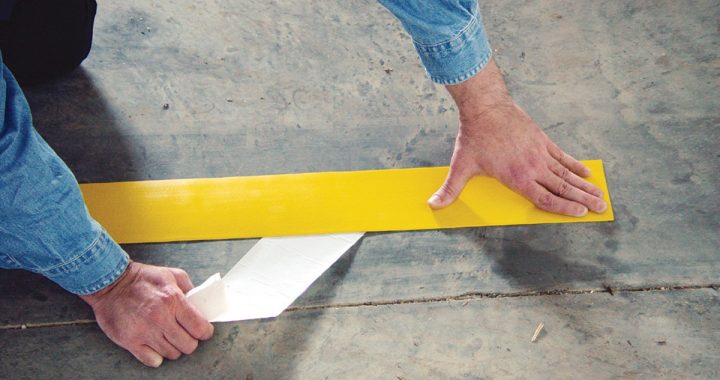In the fast-paced world of logistics and warehousing, organisation is key to maintaining a smooth flow of operations.Read More
With the right approach, it can help businesses optimise their space and reduce costly errors. However, the type of tape you use plays a crucial role in maximising the effectiveness of these markings. Selecting the Right Tape for Different Warehouse Needs Not all warehouse environments are the same. The type of goods being stored and the layout of the warehouse will influence the kind of tape needed for floor marking. For example, in areas with high foot traffic, such as retail picking zones, durable, non-slip tape is essential to prevent wear and tear. Meanwhile, in heavy-duty industrial settings, where machinery is in constant motion, thicker, more robust floor marking tape is required to withstand the weight and friction. For a more organised and clear layout, the colour of the tape is just as important. Bright colours like yellow or red are commonly used for safety zones or high-risk areas, ensuring visibility and alerting workers to potential hazards. On the other hand, blue or green tape is often used in storage or inventory zones to maintain a clear distinction between different sections of the warehouse. Improving Efficiency and Productivity Strategically placed floor markings can improve efficiency by creating clear pathways for workers and machinery. This reduces the time spent searching for products or navigating through the warehouse. For example, marking specific aisles for certain products, such as fragile goods or high-demand items, ensures that the right items are always easily accessible. This not only reduces delays but also enhances stock control, making it easier to track inventory. Floor markings also encourage a more organised and systematic approach to storage. By designating specific areas for particular items, warehouse managers can avoid the confusion that arises from misplaced or improperly stored goods. With this enhanced organisation, operations can run more smoothly, leading to fewer mistakes and more effective use of space. Enhancing Safety and Reducing Risks In warehouses, safety is a primary concern. With the combination of forklifts, workers, and heavy goods, accidents can happen if there is confusion about where to go or what to do. Proper floor marking helps mitigate these risks by clearly defining safe walking paths, restricted areas, and machinery zones. Using tape to indicate pedestrian zones, for instance, helps to ensure workers aren’t inadvertently walking in areas used by moving vehicles or forklifts. This simple measure can drastically reduce workplace accidents and injuries, ensuring a safer environment for everyone. In addition to marking out safety zones, floor marking also helps guide the safe storage of hazardous materials, keeping them separate from everyday goods. This makes it easier to comply with safety regulations and maintain a secure working environment. Conclusion: The Power of Floor Marking in Warehouse Operations In conclusion, investing in the right type of floor marking for warehouse operations is not just about creating a neat and organised space; it’s about driving business success. By improving efficiency, enhancing safety, and boosting productivity, floor markings can make a significant difference in how a warehouse operates. When chosen wisely, the right floor marking tape can optimise your warehouse layout, reduce accidents, and help streamline workflows, ultimately contributing to your bottom line.
Transforming Warehouse Operations: How Floor Marking Drives Business Success
In the fast-paced world of logistics and warehousing, organisation is key to maintaining a smooth flow of operations.Read More










